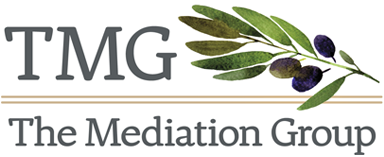Think Before You Meet
The Importance of Good Planning and Preparation
Take a moment to remember the last time you went to a really good meeting. What was good about it? If you are like most people, the following words probably popped into your mind:
Clear purpose
Productive
Efficient
Creative solutions
Problem solving
Good follow-through
Now…take a moment to remember the last time you found yourself in a really bad meeting. What was bad about it? Let me guess:
No purpose or direction
Too long
Key people missing
Conflict or tension
No tangible outcomes
Waste of time
Meetings are taking up more and more of our workday, and yet most employees agree they do not reap any tangible benefits from then and in fact, consider them detrimental to their productivity. According to a survey of U.S. professionals by Salary.com, meetings ranked as the number one killer of office productivity. But take heart – a well-planned and executed meeting can actually energize participants and spur creativity and problem-solving.
When planning a meeting remember these three simple words:
ORGANIZE DON’T AGONIZE!
Here’s how:
Before calling a meeting, ask the following questions:
1. What is the purpose of the meeting and what outcomes do I want to achieve?
Some reasons for wanting to meet may include announcements, information exchange, generating ideas, problem solving and/or relationship building.
2. Is there a better, more efficient way of achieving these outcomes than holding a meeting?
If you are simply providing routine information on last quarter’s budget numbers or requesting status updates on employee projects or sales leads, perhaps that information could be exchanged electronically. Which brings us to the next question…
3. Does it have to be an “in-person” meeting?
A colleague of mine who works for a large government agency recently shared that he and 50 other senior managers were called to a mandatory in-person meeting at their regional office, for which most of the participants, was over 100 miles away. The meeting, which lasted only an hour, consisted of a series of announcements related to budget cuts that needed to be made. No questions were taken, no discussion followed. For the one-hour meeting, each well-compensated manager (we’re talking 6-figures) lost approximately 5 hours of productivity and in addition, was paid 55 cents per mile for travel at a cost of over $5,000.00 to the agency. The agency does this regularly in each of its 45 regions across the country. You do the math. Recent technologies including video conferencing, can be much more cost efficient AND more environmentally friendly!
4. Who needs to be invited?
For most people there is nothing worse than sitting through a meeting that has absolutely no relevance to them or the work they do. When thinking about whom to invite to a meeting, consider who might be directly impacted by decisions that need to be made or who would be the best source of information or have the most expertise when trying to solve a problem.
Now some simple steps for keeping meetings on-track and productive:
1. Provide participants with a clear agenda.
Do this in advance of the meeting and let them know what materials to read or prepare. You may consider giving everyone a few minutes at the beginning of the meeting to re-read materials to refresh their memory. Hey…we’re all busy, right?
2. Keep meeting length short
. . . and be REALISTIC about what can be accomplished during that time.
3. Start on time and end on time.
Enough said.
4. Consider imposing an “E-Ban” on participants.
I was at a meeting recently where the facilitator had a basket at the front of the room and all participants were asked to put their smartphones and tablets in it. It worked really well. Instead of everyone checking their e-mail or playing on their phones under the table – they were actually engaged in discussion.
5. Stick to the agenda topics.
It’s easy to stray off topic and get lost in a good discussion about something else. Have a white board or flip chart to capture ideas and topics for future discussion and then steer the discussion back on track.
6. Follow-up.
Before leaving the meeting, confirm everyone’s understanding of decisions made, next steps, responsibilities and assigned deadlines. Shortly thereafter, circulate a written summary of these points and invite feedback/corrections.
7. Evaluate the meeting and adjust.
Think continuous improvement. It is important to reflect on whether the stated goals and objectives of the meeting were actually met. If they were not, why? What might you do differently/better next time? In addition to self-reflection, it is important to ask participants for their ideas about how to make meetings work better from their perspective and take that feedback seriously – think of it as a gift!
If you want to learn more about how to plan and execute better meetings, TMG’s Training Institute is offering a workshop on April 14 & 15, 2015 called “We’ve Got to Start Meeting Like This”. This workshop, led by The Mediation Group’s Senior Consultant Loraine Della Porta, will be held at our offices in Brookline, MA. For more information or to register, email info@themediationgroup.org, visit our web page www.themediationgroup.org/training or call 617-277-9232.
